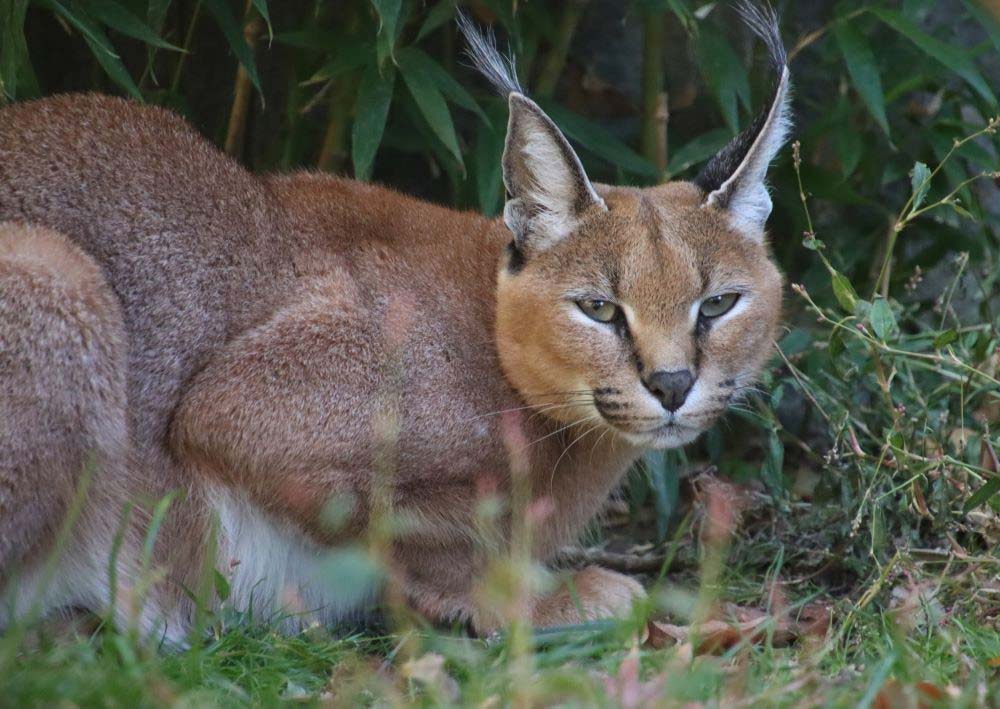Meet Our Animals
The Brandywine Zoo proves that great things do come in small packages. The Zoo features animals from the tropical and temperate areas of North and South America, Asia and Africa. Our animals range from more common species to the highly endangered. All enjoy natural settings and welcome your visit to the zoo. Some animals may be off exhibit during cold weather.
Caracal caracal
Caracal

Habitat
Caracals are typically found in woodlands, thickets, and scrub forest, plains and rocky hills are also common habitats.
Geographic Region & Range
Caracals can be found over much of Africa and southwestern Asia
Diet
Carnivores. Eat mostly birds and small mammals but occasionally reptiles as well. In the zoo, they eat a feline diet consisting of meat (feline meatballs, etc.) and boiled eggs.
Physical Description
The Caracal is a short-haired cat with reddish-brown fur and black tufts of hair on their pointed ears. The trademark features of caracals are their elongated and black-tufted ears.
Lifespan
Natural Habitat: 12 years
Under Human Care: Up to 20 years
Threats
Predation on small livestock has resulted in the extermination of thousands of caracals annually. Habitat destruction is a threat to caracals in central, west, north, and northeast Africa.
Status
Least Concern
What are AZA Zoos doing for
Caracal
Caracals are cooperatively managed in AZA Zoos and Aquariums through a Species Survival Plan (SSP).
